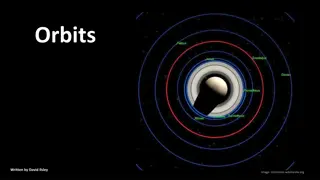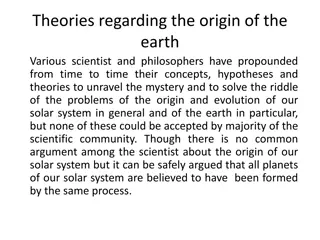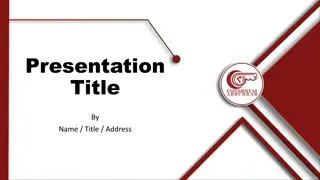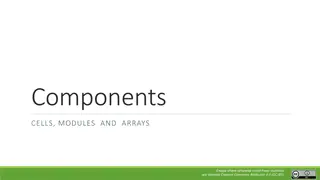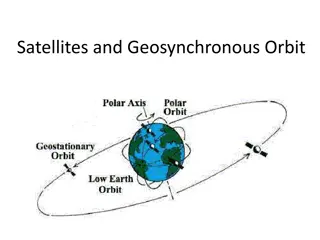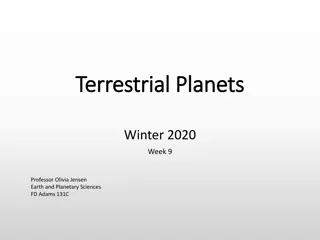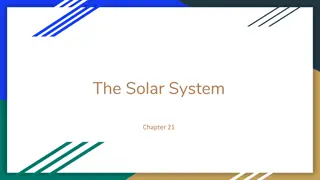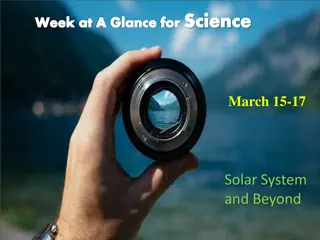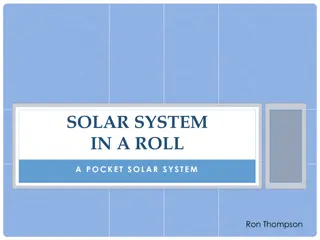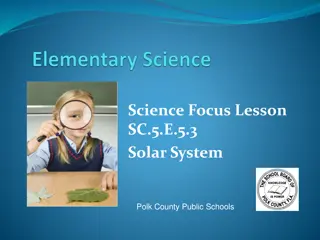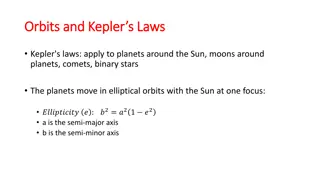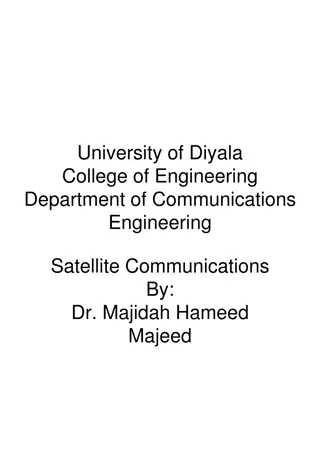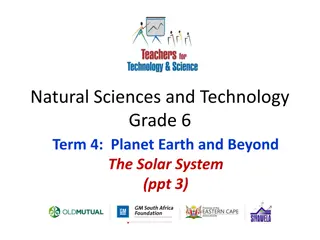Exploring the Solar System: Planets, Orbits, and More
Dive into the fascinating world of the solar system with this chapter on Astronomy. Learn about planets, moons, asteroids, comets, and more as they orbit the Sun. Understand the forces of gravity and inertia that keep celestial bodies in motion and explore ancient ideas about planetary motion. Discover how observations and theories have shaped our understanding of the vast universe around us.
Download Presentation

Please find below an Image/Link to download the presentation.
The content on the website is provided AS IS for your information and personal use only. It may not be sold, licensed, or shared on other websites without obtaining consent from the author.If you encounter any issues during the download, it is possible that the publisher has removed the file from their server.
You are allowed to download the files provided on this website for personal or commercial use, subject to the condition that they are used lawfully. All files are the property of their respective owners.
The content on the website is provided AS IS for your information and personal use only. It may not be sold, licensed, or shared on other websites without obtaining consent from the author.
E N D
Presentation Transcript
LESSON 3 THE SOLAR SYSTEM Chapter 8, Astronomy
OBJECTIVES Identify planets by observing their movement against background stars. Explain that the solar system consists of many bodies held together by gravity.
MAIN IDEA The solar system consists of the planets, their moons, and many other bodies orbiting the Sun.
VOCABULARY planet moon solar system inertia
asteroid comet meteoroid meteor meteorite
WHAT IS THE SOLAR SYSTEM? Before telescopes were invented people studied stars by looking up at the night sky. People noticed the bright lights in the sky changed. A solar system has stars like the sun as well as moons and planets. All but 2 planets have one or more than one moon.
PLANETS AND ORBITS Gravity is the force of attraction among all objects. The amount of gravitational force between the sun and a planet depends on mass and distance. The greater the mass, the greater the force. The greater the distance, the less force.
The second property that keeps planets in orbit is inertia. Without it we would be pulled into the Sun because of its mass. With only inertia the planets would move in a straight line. Gravity and inertia are balanced so the planets paths are curved.
IDEAS ABOUT PLANETARY MOTION Ancient astronomers saw that the planets moved across the field of stars but didn t know why. Over time two explanations emerged.
The first explanation was that the Earth was the center of the universe. The other explanation was that the Earth, the Moon, the stars, and other planets revolve around the Sun.
QUICK CHECK Classify List the planets in order of increasing distance from the Sun. Mercury, Venus, Earth, Mars, Jupiter, Saturn, Uranus, Neptune
Critical Thinking Would the pull of the Sun s gravity on a space probe be greater near Mercury or near Saturn? Explain. The Sun s gravity on a space probe would be greater near Mercury because it is closer to the Sun.
WHAT IS IN THE INNER SOLAR SYSTEM? Mercury, Venus, Earth, and Mars are closest to the Sun and called the inner planets. They have similar sizes and mostly rocky structures. They also have closely spaced orbits and few, if any, moons. All the inner planets rotate relatively slow and none of them have rings. Earth is the largest of the inner planets.
ASTEROIDS Between the orbits of Mars and Jupiter are asteroids, rocky or metallic objects, that orbit the Sun. Most asteroids are located in the asteroid belt. The largest object is about one fourth the diameter of the Moon. Asteroids orbit the Sun just like planets. Some asteroids travel as far from the Sun as Saturn s orbit, other asteroids have orbits that cross Earth s path.
Scientists have a lot of knowledge about asteroids by using space probes. Galileo, a space probe, passed by Gaspra and Ida, two asteroids. NEAR Shoemaker, another space probe, encountered the asteroid Mathilde and landed on Eros.
QUICK CHECK Classify List the inner planets in order from smallest to largest. Mercury, Mars, Venus, Earth
Critical Thinking In what ways are asteroids similar to planets? Asteroids are similar to planets because they are also made of rock and metal. They orbit the sun, as do the planets.
WHAT ARE THE OUTER PLANETS? Beyond the asteroid belt is another group of planets that includes Jupiter, Saturn, Uranus, and Neptune, known as the outer planets. They are gas giants which are huge planets with a small, metallic core, and a thick atmosphere. The gas giants all have rings and many moons. They spin very rapidly, so a day on a gas giant is very short.
Pluto was once known as the ninth planet. In 2003, astronomers discovered a similar, slightly larger world beyond the orbit of Pluto. In 2006, the International Astronomical Union reclassified Pluto as a dwarf planet.
QUICK CHECK Classify List the outer planets in order from smallest to largest. Neptune, Uranus, Saturn, and Jupiter are the outer planets listed from smallest to largest.
Critical Thinking How is Pluto different from the outer planets? Differences between Pluto and the outer planets include size and rings. The outer planets are huge, while Pluto is very small. The outer planets have rings and Pluto does not.
WHAT ARE OTHER OBJECTS IN OUR SOLAR SYSTEM? A comet is a ball of ice and rock that orbits the Sun. They come from the outer fringes of the solar system.
Some comets come from the Kuiper belt located just beyond Pluto s orbit. Other comets originate in an area called the Oort cloud, a region surrounding the solar system at a distance of about 30 trillion kilometers from the Sun.
Meteoroids are small, rocky, or metallic objects that orbit the Sun in both the inner and outer regions of the solar system. A meteor is a meteoroid that enters Earth s atmosphere. A meteoroid that strikes Earth s surface is a meteorite.
QUICK CHECK Classify How are space objects classified as meteoroids, meteors, and meteorites? In space, they are meteoroids; In Earth s atmosphere, meteors; And on Earth, they are meteorites.
Critical Thinking Is the tail of a comet in front of or behind the comet? Explain your answer. Sunlight and solar radiation push the cloud (tail) away, forming a tail behind it that always points away from the Sun.








